 Web Front-end
Web Front-end H5 Tutorial
H5 Tutorial Using html5 ajax Java interface to implement uploading image example code
Using html5 ajax Java interface to implement uploading image example codehtml5 image upload [File upload], I found a lot of information on the Internet, there are mainly two ways
1.from form submission
<form action="pushUserIcon" method="post" enctype="multipart/form-data">
<table>
<tr>
<td width="50" align=left>图片:</td>
<td><input type="file" name="file"/></td>
</tr>
<tr>
<td width="50" align="left">用户id:</td>
<td><input type="text" name="userId"/></td>
</tr>
<tr>
<td><input type="submit"> </td>
</tr>
</table>
</form>Note: enctype= "multipart/form-data" must be filled in
1.1. Submit the Java page directly:
@RequestMapping(value="/pushUserIcon",method=RequestMethod.POST)
@ResponseBody
public String pushUserIcon(HttpServletRequest request, HttpServletResponse response) throws IOException,BaseException {
String result = null;
String userId = request.getParameter("userId");
try{
//转型为MultipartHttpRequest(重点的所在)
MultipartHttpServletRequest multipartRequest = (MultipartHttpServletRequest) request;
//获得第1张图片(根据前台的name名称得到上传的文件)
MultipartFile file = multipartRequest.getFile("file");
result = uploadImageServic.uploadFile(file, request, userId);
System.out.println("result:" + result);
response.setContentType("text/html;charset=utf8");
response.getWriter().write("result:" + result);
}catch(Exception e){
BaseException baseException = new BaseException(e);
baseException.setErrorMsg("Upload API Exception");
throw baseException;
}
return null;
}
1.2. There are many native js and jQuery on the Internet, so I won’t go into details here.
1.2.1. Two ways to create fromData
##
var formData = new FormData($("#myForm")[0]);//用form 表单直接 构造formData 对象; 就不需要下面的append 方法来为表单进行赋值了。
//var formData = new FormData();//构造空对象,下面用append 方法赋值。
// formData.append("policy", "");
// formData.append("signature", "");
// formData.append("file", $("#file_upload")[0].files[0]);
2. No need to submit from form:
##<table style="border: 1px solid black; width: 100%">
<tr>
<td width="50" align=left>图片:</td>
<td><input type="file" id="imageFile" name="img" multiple="multiple"/></td>
<td>
<input type="button" value="调用" onclick="pushImg()" />
</td>
</tr>
</table> That's it for HTML. I think everyone can understand it. Now let's talk about these two submission methods. How is Ajax coded? [The from form submission method can also use js or directly submit the page to refresh]
There are also 2 types of Ajax coding:
1. Native jsfunction sub()
{
var file = document.getElementById("imageFile");
var files = file.files;
for(var i = 0 ; i < files.length;i++)
{
uploadFile(files[i]);
}
}
var xhr = null;
function uploadFile(file) {
xhr = new XMLHttpRequest();
/* xhr.addEventListener("error", uploadFailed, false);
xhr.addEventListener("abort", uploadCanceled, false); */
xhr.open("post", "upload/", true); //访问控制器是upload,后面必须加'/'否则会报错"org.apache.catalina.connector.RequestFacade cannot be cast to org.springframework.web.multipart.Mult...",但是如果是多级的URL【例如XX/XXX/00/upload/0】又没问题了.
var fd = new FormData();
fd.append("userID", "1");
fd.append("errDeviceType", "001");
fd.append("errDeviceID", "11761b4a-57bf-11e5-aee9-005056ad65af");
fd.append("errType", "001");
fd.append("errContent", "XXXXXX");
fd.append("errPic", file);
xhr.send(fd);
xhr.onreadystatechange = cb;
}
function cb()
{
if(xhr.status == 200)
{
var b = xhr.responseText;
if(b == "success"){
alert("上传成功!");
}else{
alert("上传失败!");
}
}
}2.jquery
##function pushImg(obj) {
debugger;
var url = "upload/"; //访问控制器是upload,后面必须加'/'否则会报错"org.apache.catalina.connector.RequestFacade cannot be cast to org.springframework.web.multipart.Mult...",但是如果是多级的URL【例如XX/XXX/00/upload/0】又没问题了.
var param = $("#errorParameter").val();
var files = $("#imageFile").get(0).files[0]; //获取file控件中的内容
var fd = new FormData();
fd.append("userID", "1");
fd.append("errDeviceType", "001");
fd.append("errDeviceID", "11761b4a-57bf-11e5-aee9-005056ad65af");
fd.append("errType", "001");
fd.append("errContent", "XXXXXX");
fd.append("errPic", files);
$.ajax({
type: "POST",
contentType:false, //必须false才会避开jQuery对 formdata 的默认处理 , XMLHttpRequest会对 formdata 进行正确的处理
processData: false, //必须false才会自动加上正确的Content-Type
url: url,
data: fd,
success: function (msg) {
debugger;
var jsonString = JSON.stringify(msg);
$("#txtTd").text(jsonString)
alert(jsonString);
},
error: function (msg) {
debugger;
alert("error");
}
});
}Now the front-end should be almost complete, now it’s the interface. My parameters and access paths are all good, now I just need the interface service:
spring mvc framework:
@RequestMapping(value = { "upload" })
public void pushErrorData(HttpServletRequest request,
HttpServletResponse response) throws BaseException {
String userID=request.getParameter("userID");
// 转型为MultipartHttpRequest(重点的所在)这个就是上面ajax中提到如果直接访问此接口而不加"/",此转型就会报错
MultipartHttpServletRequest multipartRequest = (MultipartHttpServletRequest) request;
//MultipartFile file = multipartRequest.getFiles("errPic");//获取文件集合 对应 jquery $("#imageFile").get(0).files
// 获得第1张图片(根据前台的name名称得到上传的文件)
MultipartFile file = multipartRequest.getFile("errPic"); //对应 jquery $("#imageFile").get(0).files[index]
Map<String, Object> map = new HashMap<String, Object>();
if (null!=file && !file.isEmpty()) {
try {
map = Common.uploadFile(file);
} catch (IOException e) {
BaseException baseException = new BaseException(e);
//baseException.setErrorMsg(imgErrorMsg);
throw baseException;
}
}
}
/**
* 图片上传
*
* @param file
* @return
* @throws IOException
* @throws BaseException
*/
public static Map<String, Object> uploadFile(MultipartFile file)
throws IOException, BaseException {
String fail = ConfigBundleHelper.getValue("busConfig", "fail");//上传失败状态
String success = ConfigBundleHelper.getValue("busConfig", "success");//上传成功状态
String errorMsg = ConfigBundleHelper.getValue("busConfig","imgErrorMsg");//上传错误信息
String filePath = ConfigBundleHelper.getValue("busConfig", "filePath");//上传路径,本来是相对路径,但是在发布后路径会创建在tomcat的bin目录下,所以接口上传的路径是一个难题,我用的是绝对路径,等到发布到Linux环境中,通过配置文件修改路径为Linux中的资源地址【防止工程删除而资源文件不会丢失】,然后重新发布工程时再通过Linux的命令把我们需要的资源文件导入到我们发布的工程项目中。
String size = ConfigBundleHelper.getValue("busConfig", "fileSize");
String interfaceService = ConfigBundleHelper.getValue("busConfig",
"interfaceService");
long maxFileSize = (Integer.valueOf(size)) * 1024 * 1024;
String suffix = file.getOriginalFilename().substring(
file.getOriginalFilename().lastIndexOf("."));
long fileSize = file.getSize();
Map<String, Object> map = new HashMap<String, Object>();
if (suffix.equals(".png") || suffix.equals(".jpg")) {
if (fileSize < maxFileSize) {
// System.out.println("fileSize"+fileSize);
String fileName = file.getOriginalFilename();
fileName = new String(fileName.getBytes("ISO-8859-1"), "UTF-8");
File tempFile = new File(filePath, new Date().getTime()
+ fileName);
try {
if (!tempFile.getParentFile().exists()) {
tempFile.getParentFile().mkdirs();//如果是多级文件使用mkdirs();如果就一层级的话,可以使用mkdir()
}
if (!tempFile.exists()) {
tempFile.createNewFile();
}
file.transferTo(tempFile);
} catch (IllegalStateException e) {
BaseException baseException = new BaseException(e);
baseException.setErrorMsg(errorMsg);
throw baseException;
}
map.put("SUCESS", success);
map.put("data",interfaceService + filePath + new Date().getTime() + tempFile.getName());
} else {
map.put("SUCESS", fail);
map.put("data", "Image too big");
}
} else {
map.put("SUCESS", fail);
map.put("data", "Image format error");
}
return map;
}这是我在工作中所遇到到问题,分享给大家,希望大家不会在这个问题上花费大量的时间。谢谢
The above is the detailed content of Using html5 ajax Java interface to implement uploading image example code. For more information, please follow other related articles on the PHP Chinese website!
 html5的div一行可以放两个吗Apr 25, 2022 pm 05:32 PM
html5的div一行可以放两个吗Apr 25, 2022 pm 05:32 PMhtml5的div元素默认一行不可以放两个。div是一个块级元素,一个元素会独占一行,两个div默认无法在同一行显示;但可以通过给div元素添加“display:inline;”样式,将其转为行内元素,就可以实现多个div在同一行显示了。
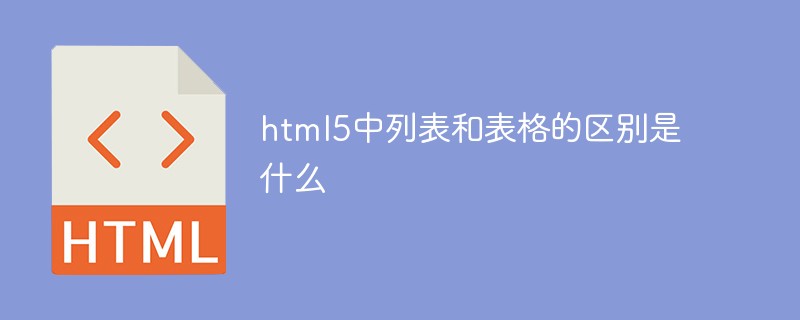 html5中列表和表格的区别是什么Apr 28, 2022 pm 01:58 PM
html5中列表和表格的区别是什么Apr 28, 2022 pm 01:58 PMhtml5中列表和表格的区别:1、表格主要是用于显示数据的,而列表主要是用于给数据进行布局;2、表格是使用table标签配合tr、td、th等标签进行定义的,列表是利用li标签配合ol、ul等标签进行定义的。
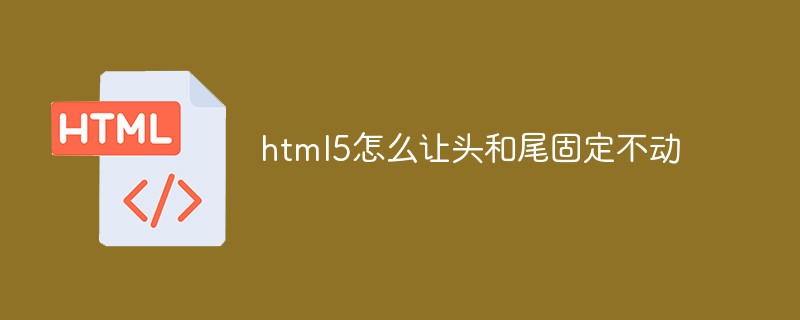 html5怎么让头和尾固定不动Apr 25, 2022 pm 02:30 PM
html5怎么让头和尾固定不动Apr 25, 2022 pm 02:30 PM固定方法:1、使用header标签定义文档头部内容,并添加“position:fixed;top:0;”样式让其固定不动;2、使用footer标签定义尾部内容,并添加“position: fixed;bottom: 0;”样式让其固定不动。
 HTML5中画布标签是什么May 18, 2022 pm 04:55 PM
HTML5中画布标签是什么May 18, 2022 pm 04:55 PMHTML5中画布标签是“<canvas>”。canvas标签用于图形的绘制,它只是一个矩形的图形容器,绘制图形必须通过脚本(通常是JavaScript)来完成;开发者可利用多种js方法来在canvas中绘制路径、盒、圆、字符以及添加图像等。
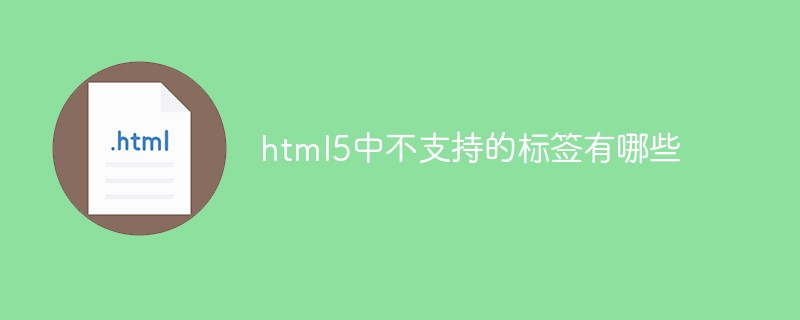 html5中不支持的标签有哪些Mar 17, 2022 pm 05:43 PM
html5中不支持的标签有哪些Mar 17, 2022 pm 05:43 PMhtml5中不支持的标签有:1、acronym,用于定义首字母缩写,可用abbr替代;2、basefont,可利用css样式替代;3、applet,可用object替代;4、dir,定义目录列表,可用ul替代;5、big,定义大号文本等等。
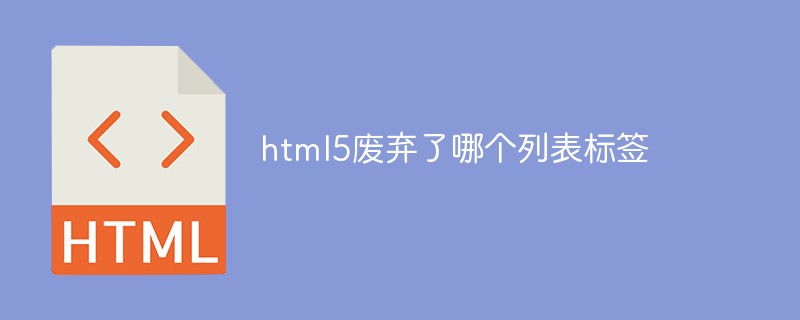 html5废弃了哪个列表标签Jun 01, 2022 pm 06:32 PM
html5废弃了哪个列表标签Jun 01, 2022 pm 06:32 PMhtml5废弃了dir列表标签。dir标签被用来定义目录列表,一般和li标签配合使用,在dir标签对中通过li标签来设置列表项,语法“<dir><li>列表项值</li>...</dir>”。HTML5已经不支持dir,可使用ul标签取代。
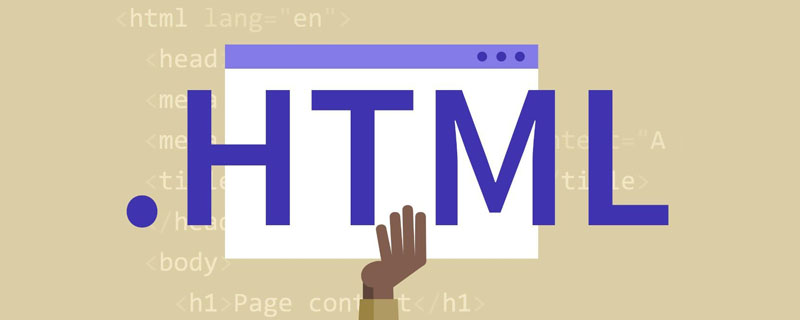 html5是什么意思Apr 26, 2021 pm 03:02 PM
html5是什么意思Apr 26, 2021 pm 03:02 PMhtml5是指超文本标记语言(HTML)的第五次重大修改,即第5代HTML。HTML5是Web中核心语言HTML的规范,用户使用任何手段进行网页浏览时看到的内容原本都是HTML格式的,在浏览器中通过一些技术处理将其转换成为了可识别的信息。HTML5由不同的技术构成,其在互联网中得到了非常广泛的应用,提供更多增强网络应用的标准机。
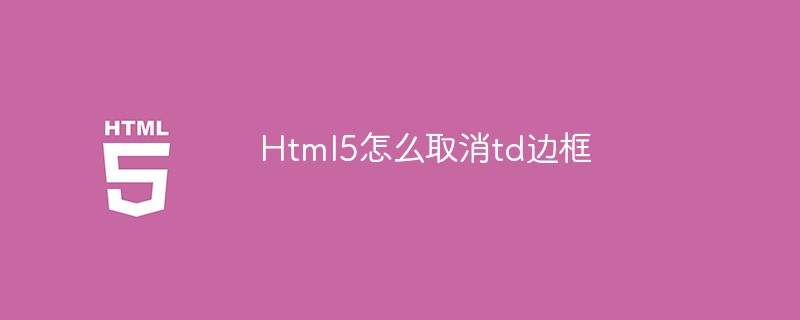 Html5怎么取消td边框May 18, 2022 pm 06:57 PM
Html5怎么取消td边框May 18, 2022 pm 06:57 PM3种取消方法:1、给td元素添加“border:none”无边框样式即可,语法“td{border:none}”。2、给td元素添加“border:0”样式,语法“td{border:0;}”,将td边框的宽度设置为0即可。3、给td元素添加“border:transparent”样式,语法“td{border:transparent;}”,将td边框的颜色设置为透明即可。


Hot AI Tools

Undresser.AI Undress
AI-powered app for creating realistic nude photos

AI Clothes Remover
Online AI tool for removing clothes from photos.

Undress AI Tool
Undress images for free

Clothoff.io
AI clothes remover

AI Hentai Generator
Generate AI Hentai for free.

Hot Article

Hot Tools

SublimeText3 Mac version
God-level code editing software (SublimeText3)

SublimeText3 Linux new version
SublimeText3 Linux latest version

SecLists
SecLists is the ultimate security tester's companion. It is a collection of various types of lists that are frequently used during security assessments, all in one place. SecLists helps make security testing more efficient and productive by conveniently providing all the lists a security tester might need. List types include usernames, passwords, URLs, fuzzing payloads, sensitive data patterns, web shells, and more. The tester can simply pull this repository onto a new test machine and he will have access to every type of list he needs.

WebStorm Mac version
Useful JavaScript development tools

SublimeText3 English version
Recommended: Win version, supports code prompts!





